Examining the Interplay Between Guideline-Directed Medical Therapy and Hyperkalemia
An expert discusses the critical balance in heart failure GDMT between maximizing lifesaving treatments and managing hyperkalemia risk, highlighting how novel potassium binders and strategic medication choices enable safer continuation and optimization of therapy to improve patient outcomes.
This content is a production of Drug Topics; this Pharmacist View Video is supported by funding from AstraZeneca. AstraZeneca was not involved in the creation of the content for this Video.
Guideline-directed medical therapy (GDMT) for heart failure is incredibly important—it’s often compared to chemotherapy in major cancers because of its significant impact on patient outcomes. The main challenge is that these lifesaving therapies, which include angiotensin receptor/neprilysin inhibitors (ARNIs), beta-blockers, mineralocorticoid receptor antagonists (MRAs), and SGLT2 inhibitors, can increase the risk of hyperkalemia due to their effects on the renin-angiotensin-aldosterone system. However, stopping or avoiding these medications because of hyperkalemia is not ideal, as their benefits in improving symptoms and survival start within weeks and are substantial. Managing hyperkalemia effectively is therefore crucial to ensuring patients continue to receive these therapies.
Within the GDMT options, some substitutions may help reduce the risk of hyperkalemia without sacrificing benefit. For example, ARNIs have a lower incidence of severe hyperkalemia compared with older ACE inhibitors like enalapril. Additionally, newer nonsteroidal MRAs may provide heart failure benefits with a more favorable potassium profile than traditional steroidal MRAs such as spironolactone. The early use of SGLT2 inhibitors also appears to lower hyperkalemia risk and enables patients to reach target doses of renin-angiotensin-aldosterone system inhibitors more safely. These nuanced choices can optimize both efficacy and safety, especially in patients with overlapping chronic kidney disease and heart failure.
Recent randomized controlled trials have demonstrated that novel potassium binders like patiromer and sodium zirconium cyclosilicate are effective tools to manage hyperkalemia, allowing patients to maintain or even escalate GDMT doses safely. These agents help bridge the gap for patients who might otherwise have to reduce or discontinue essential heart failure therapies due to potassium concerns. By incorporating potassium binders alongside GDMT, clinicians can better support long-term guideline adherence, improving outcomes and quality of life for patients with heart failure.
Newsletter
Pharmacy practice is always changing. Stay ahead of the curve with the Drug Topics newsletter and get the latest drug information, industry trends, and patient care tips.

































































































































